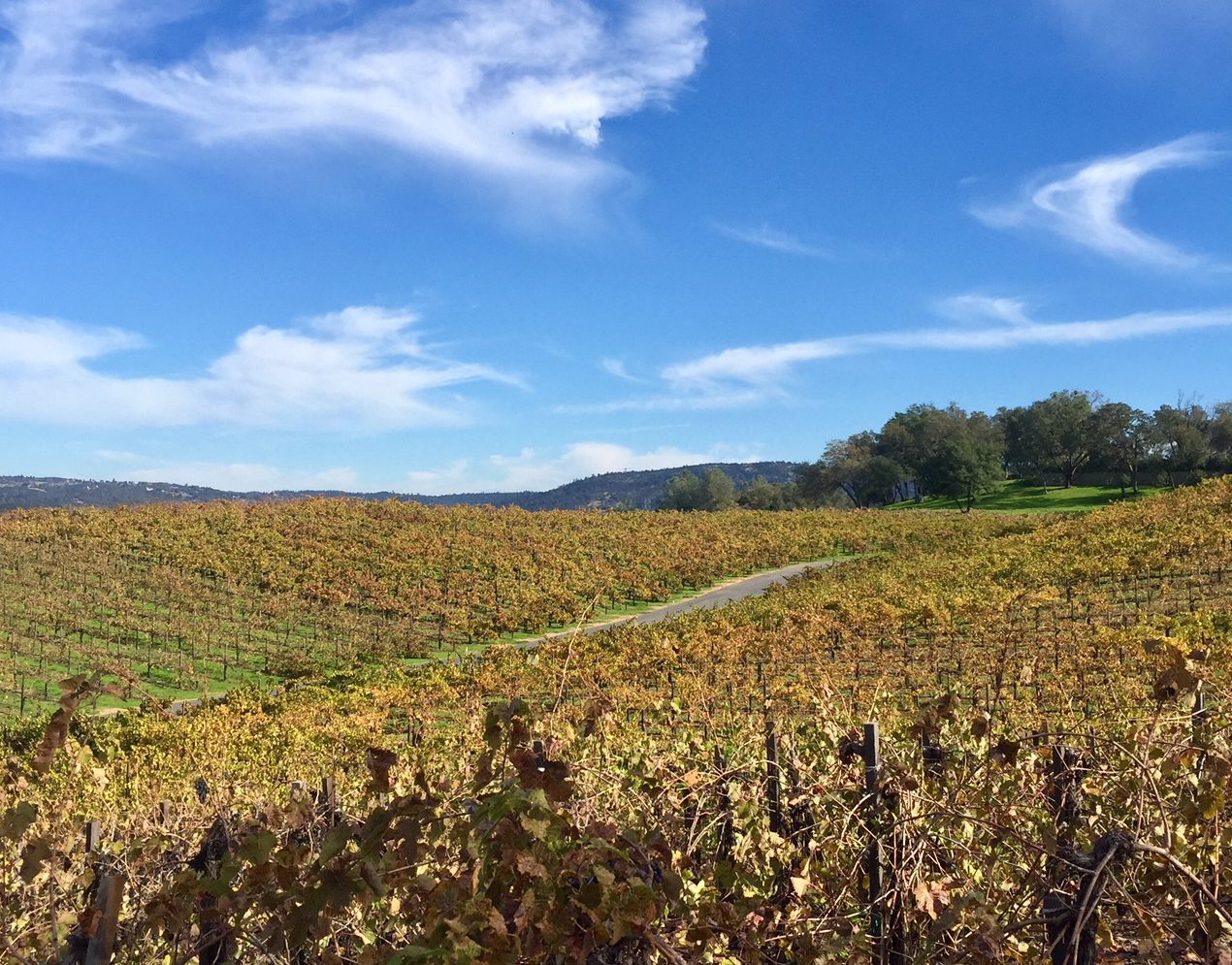This is a special place for petite sirah. There’s something about that location, the soil and the sun that the vines love and produce outstanding fruit.
– Kevin Stephenson, Owner/Winemaker at Le Casque winery.
Nestled in the Sierra Foothills at an elevation of 500′, Clos du Lac has proven to be an ideal location for growing several premium grape varieties. In a community of 200 acres, 20 acres have been set aside for vineyards planted with Cabernet Franc, Petite Sirah, Mourvèdre, and Petit Verdot. Grapes are sold to area wineries and have been used in multiple award winning wines. Wineries that buy Clos du Lac community vineyard grapes.
The varieties planted were selected for disease resistance and drought tolerance as well as their affinity for the sandy, loamy soil type. Most are on 110R root stock, planted with 6′ x 8′ spacing and vertical cordon in keeping with a traditional european style.
Cabernet Franc:
Also known as Arrouya, Bordo, Bouchet, Breton, Cabernet, Cabernet Franco, Cabernet Frank, Fer, Grosse Vidure, Petit Fer, Petit Viodure, Petite Vidure, Petite Vignedure, Cabernet Gris, is a classic Bordeaux varietal where it is primarily used for blending with Cabernet Sauvignon or Merlot to add structure. Single varietal Cabernet Franc has been growing in popularity in recent years and has a reputation as a very food friendly wine. Cab Franc tends to have lower acidity and tannins than its more famous child Cabernet Sauvignon.
Cab Franc favors sandy or chalky soil, and does well in Clos du Lac, where we’ve established a reputation for some of the best Cab Franc in the area. It tends to be the earliest ripening fruit and is typically harvested in August.
- Vine count: 8301
- Clusters: Med-Small tight clusters
- Clone: VCR 10 on 140R
- Production: 18-25 tons
- Vertical Cordon with 8′ row spacing
- Soil: Sandy loam
Highly rated wines from our Cab Franc:
- 2014 Le Casque Cabernet Franc – 90 pts Wine Enthusiast
- 2015 Le Casque Cabernet Franc – 88 pts Wine Enthusiast
Mourvèdre:
Goes by many names: Mourvède, Mourvedon, Mourves, Morvede, Morvegue, and Mourveze in France, where it is also known as estrangle-chien (“dog-strangler”). In Spain it goes by Monastrell, Tinto, Tinta, Tintilla, Alicante, and Mataró. In the United States it often is referred to as Mataro, and in fact the department of agriculture reported it under the name Mataro until 2017 when they expanded to use both the Mourvèdre and Monastrell designations.
Mourvèdre has a variety of uses including rosés as well as a single variety wine concentrated, dark-red wines with strong tannic structure. It is frequently blended with other Rhone varieties especially Grenache and Syrah where it is the M in a GSM blend. Mourvèdre has a strong concentration of anti-oxidants and consequently ages well.
Mourvèdre takes quite a bit of heat to ripen and often takes the longest between veraison and harvest to get the brix to levels that most winemakers are looking for.
- Vine count: 2905
- Clusters: Medium, well-filled to compact
- Clones: Clone #4 /110R, Tablas Creek clone FPS 05.1 on 110R rootstock
- Production: 15-16 tons
- Vertical Cordon with 8′ row spacing
- Soil: Sandy loam
Petite Sirah
Originally Durif, known as Petite Sirah or sometimes spelled as Petite Syrah in the US, originated in France as a cross pollination of Syrah pollen with the Peloursin vine. The small berries result in a high skin to juice ratio that produces wines with high tannin levels and thus the ability to age beautifully. Characteristically, these wines have dense blackberry fruit character, mixed with black pepper notes
- Vine count: 3870
- Clusters: Medium, well-filled to compact
- Clones: Clone #3 on 110R rootstock
- Production: 20-22 tons
- Vertical Cordon with 8′ row spacing
- Soil: Sandy loam
Highly rated Petite Sirah wines from Clos du Lac community vineyard grapes:
- 2015 Le Casques Petite Sirah – 92 pts Wine Enthusiast Cellar Selection
- 2015 Le Casque Espion – 92 pts Wine Enthusiast Cellar Selection
- 2014 Le Casque Espion – 92 pts Wine Enthusiast Editor’s Choice
Petit Verdot
One of the 5 classic Bordeaux grape varieties, Petit Verdot is primarily used as a blending grape to add color and tannin. In Bordeaux these vines are some of the earliest to bloom, but often the latest to harvest, which caused it to fall out of favor there. Here in the Foothills it ripens much more reliably and is now sometimes made into a single variety wine, though most often is still used as a blending grape to stiffen the mid-palate in Cabernet Sauvignon and other wines. The small berries make for higher tannins, and the grapes tend to have a higher natural acidity.
- Vine count: 920
- Clones: Clone #2 on 110R rootstock
- Production: 5-6 tons
- Vertical Cordon with 8′ row spacing
- Soil: Sandy loam
For a link to the official Clos Du Lac community vineyard page CLICK HERE
